
Thomas Phillips RA was a leading English portrait and subject painter. He painted many of the great men of the day including scientists, artists, writers, poets and explorers.

Rembrandt Peale was an American artist and museum keeper. A prolific portrait painter, he was especially acclaimed for his likenesses of presidents George Washington and Thomas Jefferson. Peale's style was influenced by French neoclassicism after a stay in Paris in his early thirties.
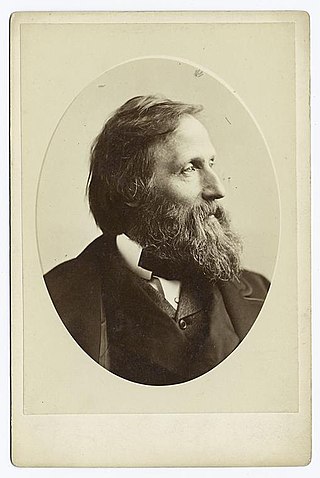
Daniel Huntington was an American artist who belonged to the art movement known as the Hudson River School and later became a prominent portrait painter.

William Page was an American painter and portrait artist.

John Mix Stanley was an artist-explorer, an American painter of landscapes, and Native American portraits and tribal life. Born in the Finger Lakes region of New York, he started painting signs and portraits as a young man. In 1842 he traveled to the American West to paint Native American life. In 1846 he exhibited a gallery of 85 of his paintings in Cincinnati and Louisville. During the Mexican–American War, he joined Colonel Stephen Watts Kearney's expedition to California and painted accounts of the campaign, as well as aspects of the Oregon Territory.

Stephen Arnold Douglas Volk was an American portrait and figure painter, muralist, and educator. He taught at the Cooper Union, the Art Students League of New York, and was one of the founders of the Minneapolis School of Fine Arts. He and his wife Marion established a summer artist colony in western Maine.
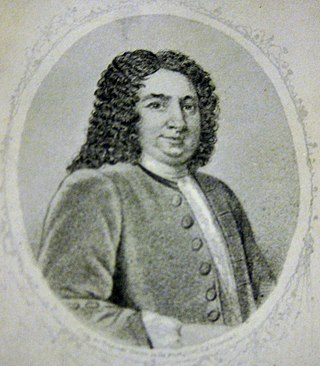
John Watson was an early American painter, born in Scotland.
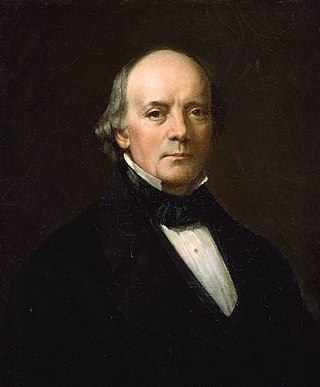
Harding's Gallery in Boston, Massachusetts, exhibited works by European and American artists in the 1830s-1840s. The building on School Street also housed a newspaper press; the Mercantile Library Association; the Boston Artists' Association; and artists' studios. The building's name derived from painter Chester Harding, who kept his studio there.

Jennie Augusta Brownscombe was an American painter, designer, etcher, commercial artist and illustrator. Brownscombe studied art for years in the United States and in Paris. She was a founding member, student and teacher at the Art Students League of New York. She made genre paintings, including revolutionary and colonial American history, most notably The First Thanksgiving held at Pilgrim Hall in Plymouth, Massachusetts. She sold the reproduction rights to more than 100 paintings, and images of her work have appeared on prints, calendars and greeting cards. Her works are in many public collections and museums. In 1899 she was described by New York World as "one of America's best artists."

John Frazee was an American sculptor and architect. The Smithsonian has a collection of many of his sculptures as well as paintings of Frazee by other artists including Asher B. Durand and Henry Colton Shumway.
Mary Martha Pearson was an English portrait painter.

James Otto Lewis was an American engraver and painter who was noted for his portraits of Native American leaders and other figures of the American frontier. Lewis began his engraving career in Philadelphia about 1815.
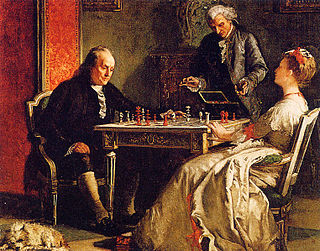
Edward Harrison May Jr. was an English-American painter who spent much of his career in Paris.

Lucy May Stanton was an American painter. She made landscapes, still lifes, and portraits, but Stanton is best known for the portrait miniatures she painted. Her works are in the National Portrait Gallery in Washington, D.C., Metropolitan Museum of Art in New York, the Museum of Fine Arts in Boston, and the Philadelphia Museum of Art, where Self-Portrait in the Garden (1928) and Miss Jule (1926) are part of the museum's permanent collection.

Emil Fuchs was an Austrian–American sculptor, medallist, painter, and author who worked in Vienna, London and New York. He painted portraits of Queen Victoria and Edward VII and was fashionable among London high society in the early 20th century.
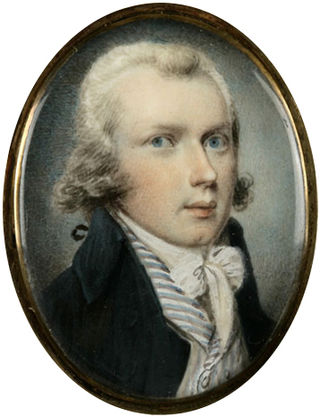
Archibald Robertson was a Scottish born painter who operated the Columbian Academy of Painting in New York with his brother Alexander. Known for his miniature portrait paintings, he was asked to paint George and Martha Washington soon after coming to the United States from Scotland. He also made watercolor landscape paintings and engravings. His book Elements of the Graphic Arts was published in 1802.

Gabrielle de Veaux Clements was an American painter, print maker, and muralist. She studied art at the Philadelphia School of Design for Women, Pennsylvania Academy of the Fine Arts, and in Paris at Académie Julian. Clements also studied science at Cornell University and graduated with a Bachelor of Science degree. She created murals, painted portraits, and made etchings. Clements taught in Philadelphia and in Baltimore at Bryn Mawr School. Her works have been exhibited in the United States and at the Paris Salon. Clements works are in several public collections. Her life companion was fellow artist Ellen Day Hale.
John Cranch was an American painter and print collector.
Jesse Talbot was an American landscape painter and a friend of the poet Walt Whitman. Born in Dighton, Massachusetts, Talbot worked for the American Tract Society and other evangelical Christian organizations in New York City before becoming a professional artist, first exhibiting in the National Academy of Design in 1838. His work was often favorably compared to that of Thomas Cole and other leaders of the Hudson River School of American landscape painters. Talbot developed a friendship with Walt Whitman in the 1850s. The notebook in which Whitman first wrote down the ideas for Leaves of Grass is known as the “Talbot Wilson notebook” because Talbot’s name and address are written on the inside front cover. Talbot died in relative obscurity in 1879.
Edwin Weyburn Goodwin was an American itinerant miniature and portrait painter active in upstate New York, and father of trompe-l'oeil painter Richard La Barre Goodwin. An abolitionist, he was a stationmaster on the Underground Railroad and published the anti-slavery newspaper The Tocsin of Liberty.
















